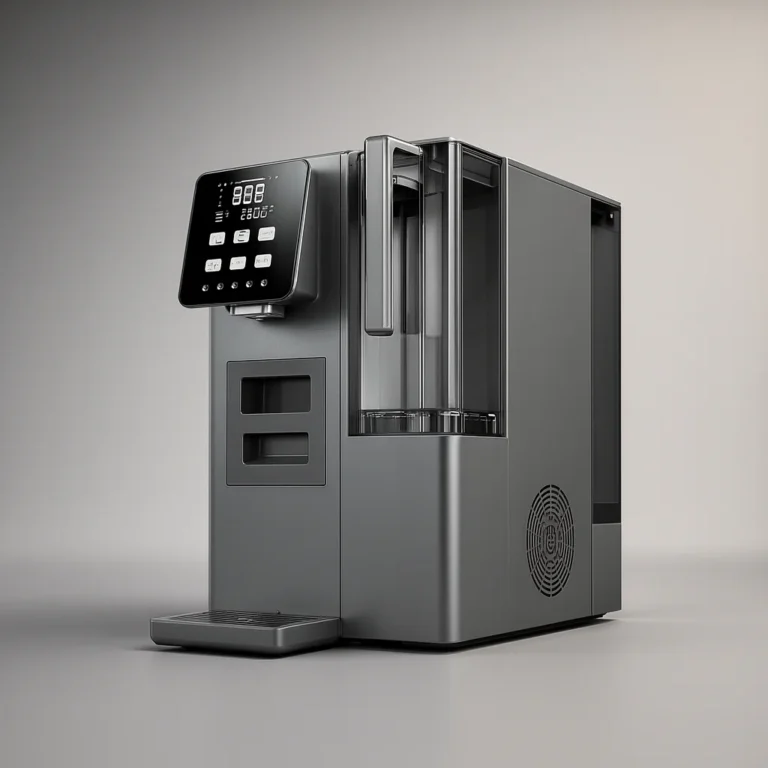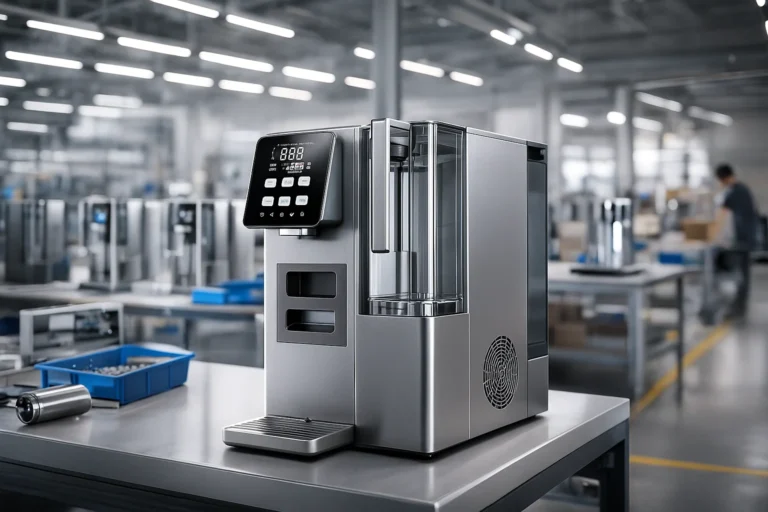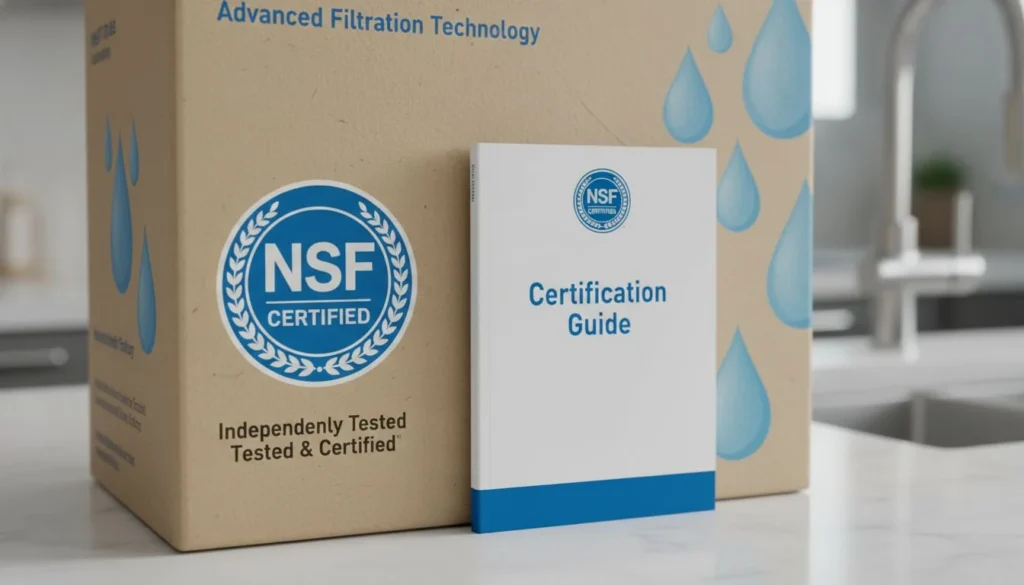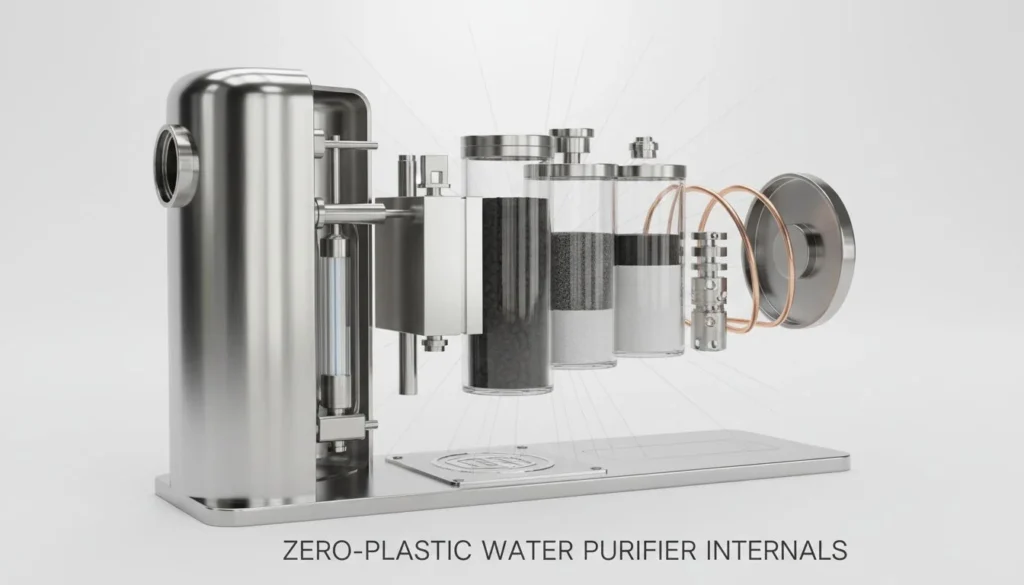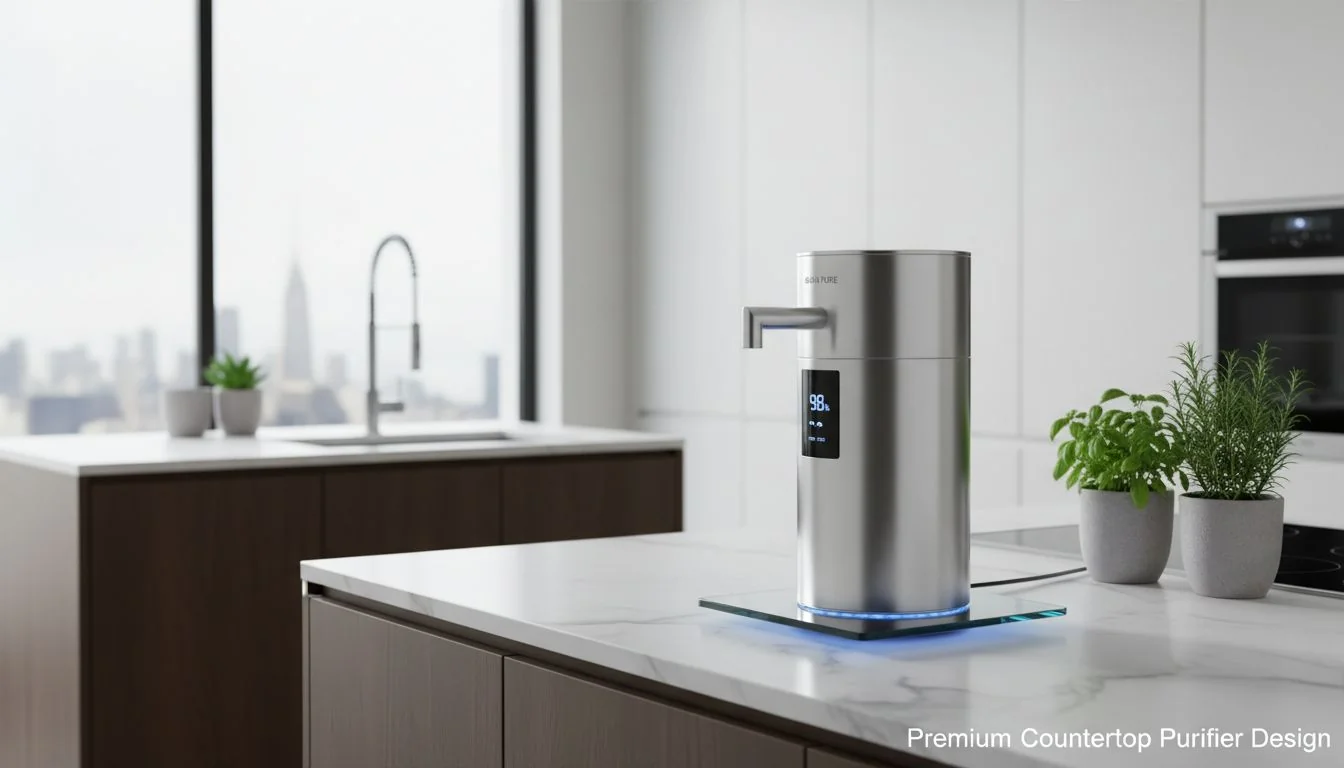
You design a product that functions perfectly, yet customers refuse to pay a high price for it. The problem is often not the function, but the perceived value and category positioning.
snippet paragraph:
A premium countertop water purifier distinguishes itself by shifting from a simple "filter" to a complex "kitchen appliance." It combines Reverse Osmosis (RO) filtration1, instant temperature control, and high-end materials like stainless steel into a drill-free, standalone unit that replaces the electric kettle and pitcher.

I have seen many designers struggle with this concept. We focus heavily on the mold structure and the injection parameters. We forget how the user categorizes the product in their mind. If it looks like a plastic pitcher, it is cheap. If it looks like a coffee machine, it is valuable. This article explores how to bridge that gap.
Generate Claims
Consumers are willing to pay 10x more for an appliance than a simple filter.Vero
Market data shows appliances like coffee makers command significantly higher price points than passive filtration pitchers due to perceived complexity and utility.
Plastic is the preferred material for premium kitchen appliances.Falso
Stainless steel and metal finishes are the standard indicators of premium quality in the appliance market, while plastic is associated with entry-level products.
Introduction: Moving Beyond the "Plastic Pitcher"?
Most designers treat water purifiers as utilitarian plastic boxes. This is a mistake. To command a premium price, you must change the category the product lives in.
snippet paragraph:
The most critical shift is elevating the product from a $30 consumable filter to a $300-$600 permanent appliance. By integrating heating, cooling, and robust materials, you move the device into the same category as a Vitamix or Espresso machine, justifying a much higher profit margin.
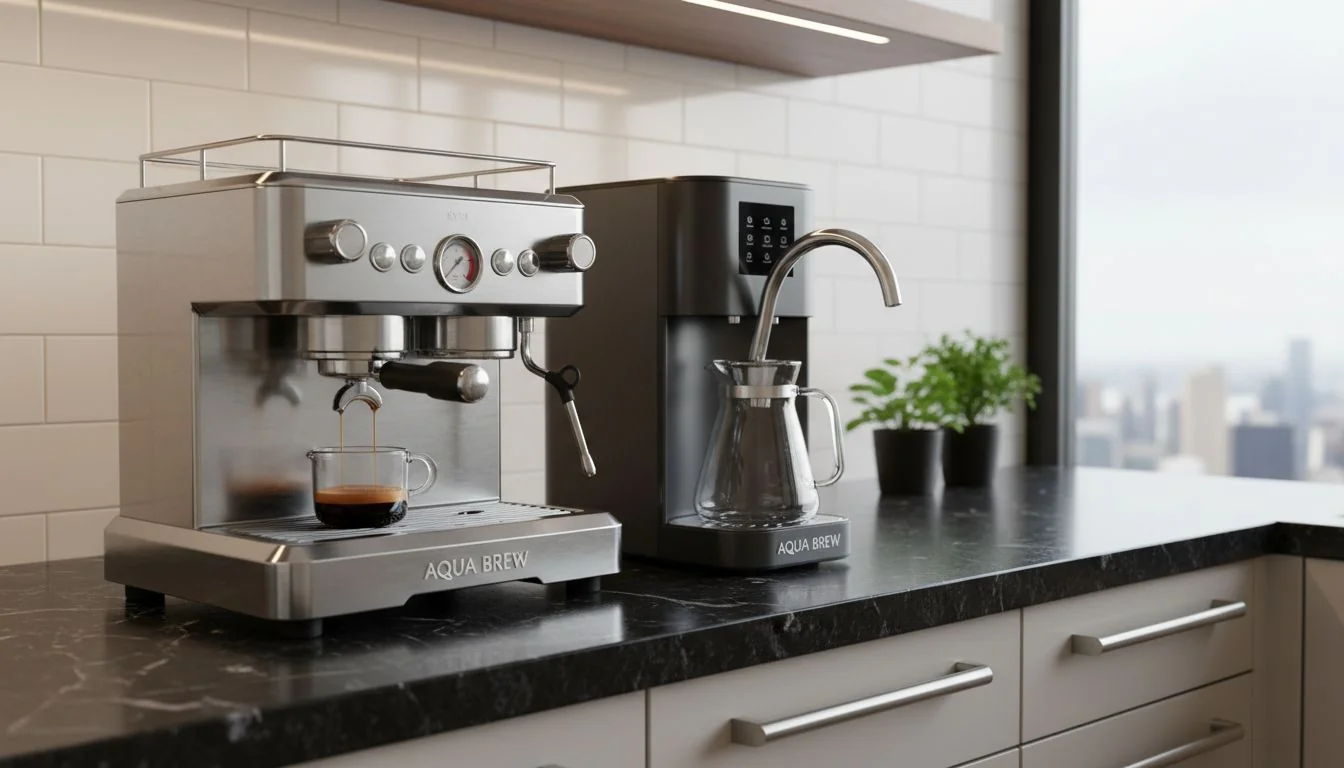
When I look at the market, I see a clear divide. On one side, you have the basic plastic pitcher. It is cheap, disposable, and simple. On the other side, you have the "Hydration Station." This is where the real value lies. As a designer, you need to understand that we are not just making a holder for a filter cartridge. We are building a machine.
Think about a coffee maker. It heats water, pumps it, and delivers a specific result. Users happily pay hundreds of dollars for this. A premium water purifier must do the same. It cannot just sit there. It must actively process the water. This means adding pumps, heaters, and cooling units.
The Value Shift
| Caratteristica | Basic Filter (Pitcher) | Premium Appliance (Purifier) |
|---|---|---|
| Primary Material | Injection Molded Plastic | stainless steel2 / Glass |
| Funzione | Gravity Filtration | RO + Heating + Cooling |
| User Perception | Consumable Accessory | Permanent Kitchen Fixture |
| Price Point | $30 - $50 | $300 - $600+ |
By adding these complex functions, you change the user's expectation. They stop comparing your product to a Brita pitcher. They start comparing it to their Breville espresso machine. This is the design intent we must aim for.
Adding electronic features like heating moves a product into the appliance category.Vero
Active features require power and engineering, shifting the product from a passive vessel to an active machine.
Designers should focus solely on filtration speed.Falso
While speed matters, the overall user experience and perceived value of the 'appliance' are more critical for premium pricing.
Pillar 1: Material Integrity (The Shift from Plastic to Steel)?
In the world of appliances, materials speak louder than specs. Plastic signals "cheap" and "temporary," while metal signals "durable" and "professional."
snippet paragraph:
To compete with high-end brands like KitchenAid, a premium purifier must utilize materials like stainless steel. This elevates the perceived value, improves hygiene, and separates the product from the sea of generic plastic RO units currently flooding the market.
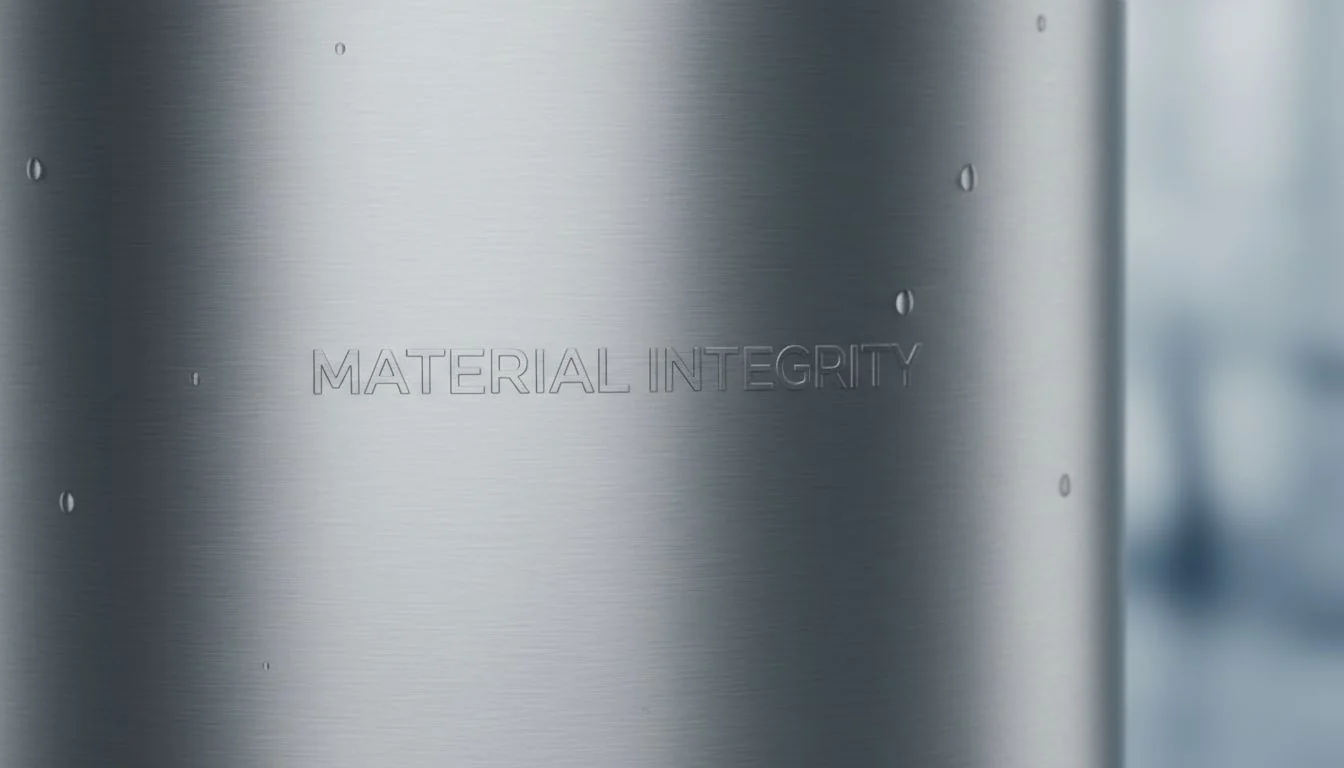
I have spent years in the mold industry. I know that plastic injection molding is efficient. It is great for mass production. However, for a high-ticket item, plastic has limitations. It scratches. It yellows over time. It feels light and hollow.
When you touch a premium product, you expect a certain coldness and weight. This is where stainless steel comes in. Using stainless steel for the body or the internal tanks is a game-changer. It is not just about aesthetics. It is about trust. Users trust steel to be clean. They trust it to hold hot water safely.
The Engineering Challenge
Integrating steel is harder than molding plastic. You have to deal with:
- Stamping and Forming: Unlike the fluid shapes of plastic, steel requires precise tooling.
- Assembly: Fitting plastic internal components into a steel shell requires tight tolerances.
- Thermal Insulation: Steel conducts heat. You need to insulate the hot water tank to prevent the outer shell from getting too hot.
Companies like Hisoair have mastered this integration. They use stainless steel not just as a skin, but as a functional part of the hygiene system. This material choice instantly tells the user: "This is built to last."
Stainless steel is naturally antibacterial and easier to clean than porous plastic.Vero
Steel surfaces are non-porous, preventing bacteria buildup and making them the standard for sanitary applications.
Plastic molds are more expensive than steel stamping dies.Falso
Generally, complex injection molds are expensive, but the per-unit cost and perceived value of plastic are lower than steel fabrication.
Pillar 2: Filtration Depth (RO + Mineralization)?
Clean water is the baseline, not the selling point. To be premium, the water must taste exceptional and provide health benefits.
snippet paragraph:
A premium system goes beyond basic carbon filtering. It utilizes Reverse Osmosis (RO) to strip contaminants, followed by a remineralization stage to restore beneficial minerals like calcium and magnesium, ensuring the water is both safe and delicious.
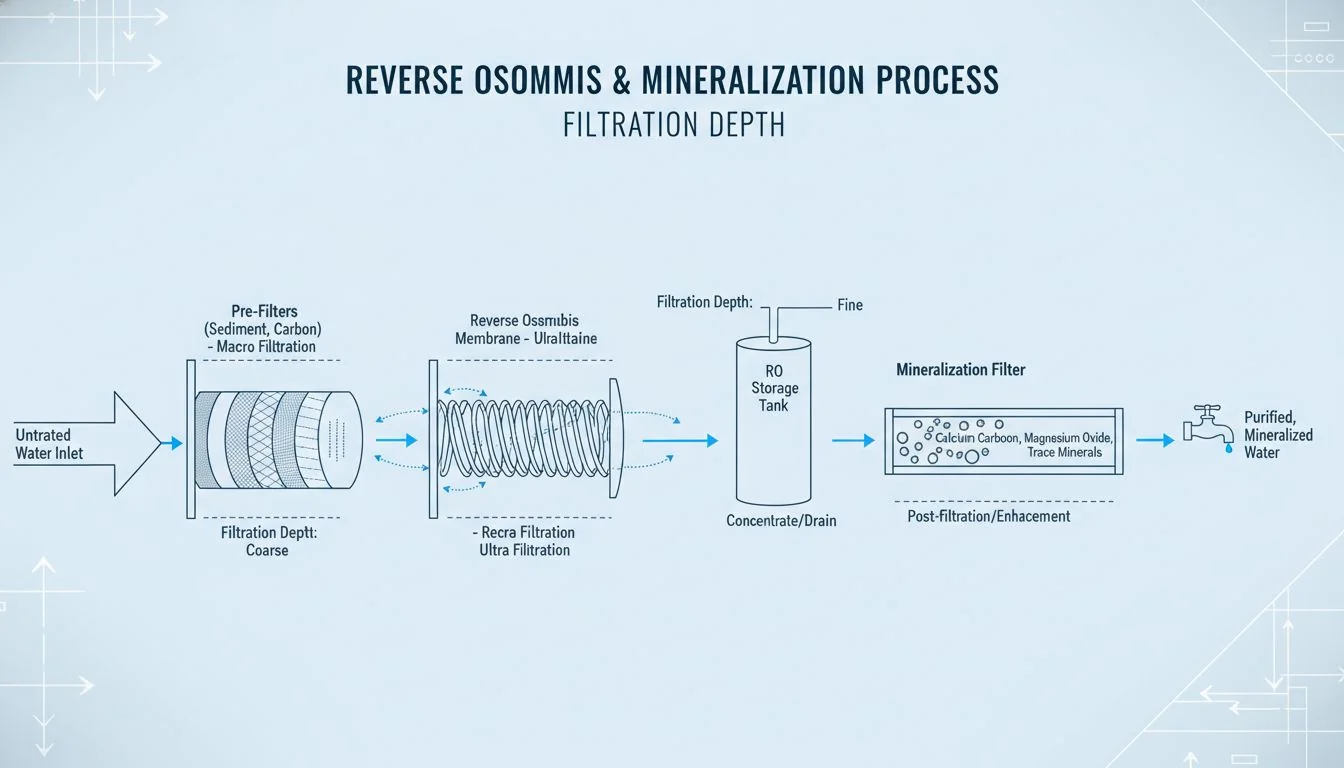
As designers, we often focus on the housing. But the "engine" inside matters most. A standard filter removes chlorine and some sediment. That is fine for basic needs. But a premium user wants purity. They want to know that lead, PFAS, and bacteria are gone. This requires Reverse Osmosis (RO).
However, RO has a flaw. It strips everything, including good minerals. The water can taste flat or slightly acidic. This is where the "Premium" distinction happens. You cannot just stop at RO. You must add a post-filter stage.
The Mineralization Workflow
- Pre-Filter: Removes large particles (protects the pump).
- RO Membrane: The heavy lifter. Removes 99.9% of dissolved solids.
- Mineral Cartridge: Adds Calcium, Magnesium, and Strontium back in.
This third step is crucial. It mimics natural spring water. It changes the pH balance to be slightly alkaline. For the user, the difference is in the taste. When I design the internal layout, I always ensure there is space for this extra cartridge. It adds complexity to the piping design, but it is essential for the final product quality.
Generate Claims
Reverse Osmosis removes beneficial minerals along with contaminants.Vero
RO membranes are so fine they remove almost all dissolved solids, including healthy minerals like calcium.
Water taste is irrelevant to the premium buyer.Falso
Taste is a primary driver for premium water products; flat or acidic water is a major complaint with standard RO systems.
Pillar 3: The "Instant" Experience (Hot, Cold, & Precision)?
Modern users value time and minimalism. They do not want a cluttered countertop with a kettle, a pitcher, and a dispenser.
snippet paragraph:
A premium purifier consolidates the kitchen counter by replacing the electric kettle. It offers instant hot water for tea and coffee, as well as chilled water, transforming the device into a multi-functional hub that justifies its footprint.
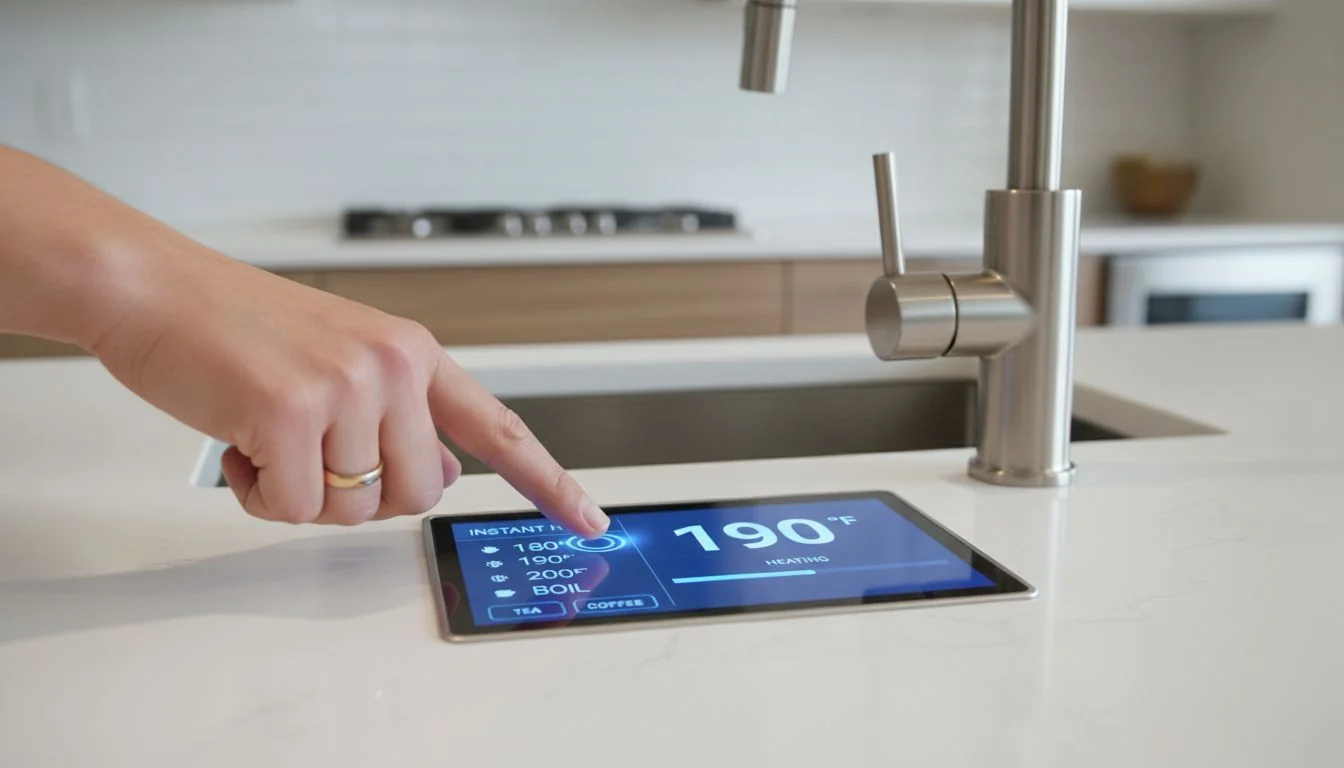
This is my favorite argument for the premium price point. We are not selling a filter; we are selling "Countertop Real Estate." Think about a typical kitchen. You have a Brita pitcher taking up space in the fridge. You have an electric kettle plugged into the wall. You might even have a separate water bottle station.
A premium purifier combines all of these.
- The Kettle Killer: It needs to boil water in seconds. This requires thick-film heating technology, not an old-school immersion heater.
- The Fridge Replacement: It needs a compressor or thermoelectric cooling to serve cold water instantly.
Thermal Management Design
From a design perspective, this is a nightmare but a necessary one. You are putting a heating element next to a cooling element inside a small box.
- Heat Dissipation: You need airflow to cool the electronics.
- Condensation: Cold pipes sweat. You need to manage moisture so it doesn't short the circuit boards.
When you solve these problems, you give the user "Instant Gratification." They press a button, and they get 95°C water for coffee. They press another, and they get 5°C water. This convenience is what they are buying.
Consolidating multiple devices into one saves counter space and appeals to minimalists.Vero
Replacing a kettle and pitcher with one device declutters the kitchen, a key selling point for modern design.
Instant heating requires less energy than boiling a full kettle.Vero
Instant systems only heat the exact amount of water needed, whereas kettles often boil more water than is used, wasting energy.
Pillar 4: "No-Installation" Freedom?
Many high-income individuals are renters. They cannot drill holes in their granite countertops for a traditional under-sink system.
snippet paragraph:
The "Countertop RO" is the perfect solution for high-spending renters in cities like New York or London. It requires no plumbing or drilling, offering a plug-and-play solution that brings premium water quality to any apartment.
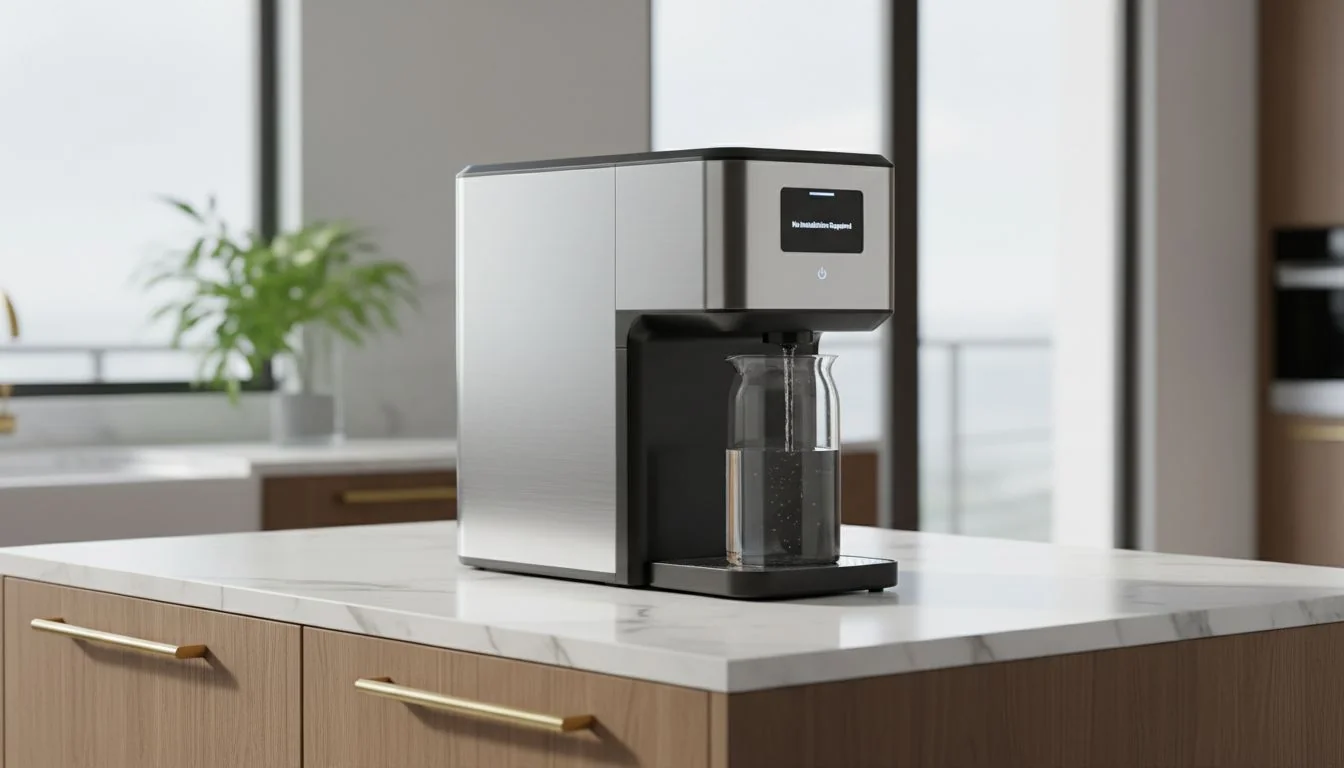
I have friends in Toronto and Vancouver who pay high rent for luxury condos. They want clean water. But they are forbidden from modifying the plumbing. They cannot install an under-sink RO system. This is a massive, hidden market.
The "no-installation3" purifier solves this. It is a standalone unit. You plug it into an electrical outlet, fill the raw water tank, and that is it.
The Tank Design Challenge
As a mold designer, the tank is the critical component here.
- Dual Tank System: You need a tank for tap water and a separate tank (or internal reservoir) for the clean water.
- Waste Water Ratio: RO produces waste water. In an under-sink system, this goes down the drain. In a countertop unit, it stays in the tank. You must design the system to alert the user when to change the water.
- Portability: The unit must be heavy enough to be stable, but light enough to move if the user relocates.
This "Freedom" is a luxury feature. It allows the user to take their investment with them when they move. It transforms the water purifier from a fixture into a personal asset.
Generate Claims
Renters are a small, insignificant portion of the premium market.Falso
High-income renters in major metropolitan areas represent a significant demographic willing to pay for non-permanent home upgrades.
Countertop RO systems require a drain line connection.Falso
Countertop systems are designed to be self-contained, recirculating or storing waste water in the feed tank for manual disposal.
Conclusione
To sell a premium purifier, stop selling a filter. Sell a "Hydration Station" that combines steel elegance, instant temperature control, and installation freedom. This justifies the appliance-level price tag.


